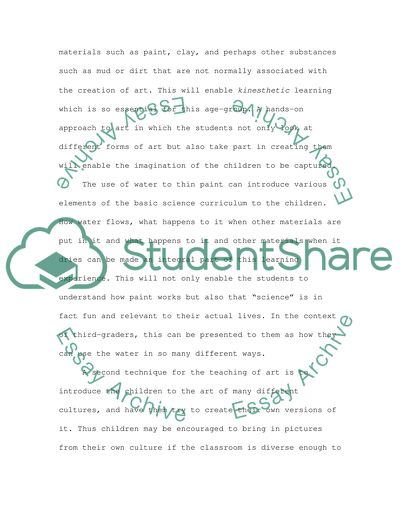Two Methods for teaching Third Grade students to appreciate Art Essay. Retrieved from https://studentshare.org/miscellaneous/1507153-two-methods-for-teaching-third-grade-students-to-appreciate-art
Two Methods for Teaching Third Grade Students to Appreciate Art Essay. https://studentshare.org/miscellaneous/1507153-two-methods-for-teaching-third-grade-students-to-appreciate-art.


